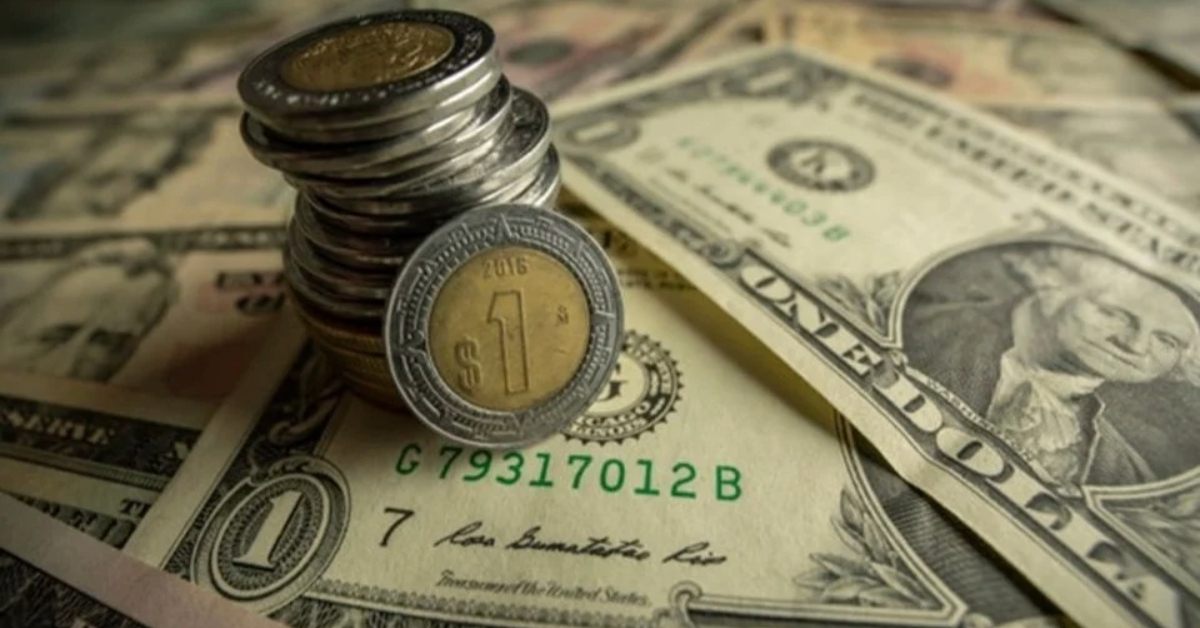The Mexican peso weakened to 19.5028 per dollar after Banxico’s surprise 50 bp rate cut and cooling US producer price and retail sales figures rattled markets.
The Mexican peso reversed early gains on Thursday, closing at 19.5028 per US dollar after traders digested a domestic rate cut and a fresh batch of US economic indicators. According to the Bank of Mexico (Banxico), the peso ended the session down 0.59 percent, or 11.36 cents, versus Wednesday’s close of 19.3892. The currency traded in a 19.3269–19.5189 range before succumbing to selling pressure late in the day.
Investors began the session buoyed by hopes that Banxico would pause its tightening cycle after six consecutive rate hikes. Instead, the central bank lowered its overnight benchmark rate by 50 basis points to 8.50 percent in a unanimous decision. Although the move was fully priced in by the market, it still sent a signal that Mexican policy makers believe inflationary pressures are receding. Banxico Governor Victoria Rodríguez Ceja noted that “while inflation remains above our 3 percent target, recent moderation justifies a gradual normalization of rates.” The decision marks the first reduction since Banxico began raising rates in mid-2021.
Domestically, the weaker peso reflects renewed concern that lower borrowing costs could rekindle demand for imports and stoke price pressures. Independent currency strategist Enrique Bazaldúa warned, “Although the adjustment was widely anticipated, pressure on the Mexican peso continues. If the buying power of the dollar persists, movements toward 19.60 cannot be ruled out in the medium term.” Lower rates tend to widen the interest-rate differential with the US, a dynamic that historically weighs on the peso as global investors seek higher yields abroad.
On the other side of the border, trading desks were also reacting to unexpected softness in US data released Thursday. The Labor Department reported that the producer price index (PPI) fell in April—its first monthly decline since last year—underscoring cooling supply-side inflation. Meanwhile, retail sales for the same month rose just 0.3 percent, below the consensus estimate of 0.5 percent, and weekly initial jobless claims held steady at a four-month low. Together, the figures suggested that US demand growth may be slowing, a development that can dent global risk appetite.
“The exchange rate lost downward momentum after economic data in the United States eased concerns about a possible slowdown in the largest economy, which poses a systemic risk to Mexico,” said analysts at Monex Grupo Financiero. In tandem, the Intercontinental Exchange’s Dollar Index (DXY) dipped 0.26 percent to 100.81, reinforcing a slightly softer dollar backdrop that briefly supported the peso before domestic monetary policy took center stage.
Market participants will be watching next week’s release of Mexico’s consumer price index (CPI) for fresh clues on inflation and Banxico’s next moves. Consensus forecasts see headline inflation easing further toward 5 percent by mid-year, down from a recent high of 8 percent in late 2023. However, core inflation—excluding volatile food and energy items—remains stickier, complicating the policy outlook. Any upside surprise in CPI could prompt Banxico to pause or even reverse its nascent easing cycle.
Beyond central-bank decisions, oil prices and geopolitical developments will also play a role in shaping the peso’s path. Mexico’s fiscal accounts benefit from higher crude prices, as oil exports account for a significant share of government revenues. Brent crude hovered near $80 per barrel on Thursday, amid renewed Middle East tensions and optimism over global demand. Should prices rally further, the fiscal cushion could bolster confidence in the peso.
On the corporate front, a weaker peso raises the cost of servicing US-dollar-denominated debt for Mexican firms. Economists caution that any sudden bout of volatility could strain balance sheets, particularly in sectors such as telecoms and infrastructure where foreign borrowing is common. At the same time, exporters stand to gain from a depreciated currency, as their peso-translated earnings increase. Analysts at Santander México estimate that every 10-cent depreciation boosts annual revenues for the nation’s top automakers by roughly 1 percent.
For consumers, the peso’s slide makes imports—ranging from electronics to pharmaceuticals—more expensive, a factor that could filter into headline inflation. Yet, tourism and remittances remain bright spots. A relatively weaker peso means foreign visitors spending US dollars enjoy greater purchasing power, providing a welcome boost to hotels and restaurants. Meanwhile, Mexican workers abroad continue to send home record levels of remittances, which help underpin local consumption.
Looking ahead, market strategists expect the peso to remain sensitive to shifts in US Federal Reserve policy. With Federal Reserve Chair Jerome Powell signalling a likely end to rate hikes, some investors anticipate rate cuts in the second half of 2025. Any dovish pivot by the Fed could narrow the interest-rate gap with Mexico, providing the peso some relief. Conversely, if US inflation proves more persistent, the Fed may prolong its tightening cycle, putting further pressure on emerging-market currencies.
For now, traders will cling to the next set of US and Mexican economic releases for directional clues. Mexico’s industrial production data for April is due on Friday, while US retail inflation figures for April arrive next week. Should either data point surprise to the upside, it could trigger renewed volatility in the FX market. In the near term, spot rates between 19.50 and 19.60 per dollar appear to be a focal zone for both longs and shorts, as investors reassess the balance of risks between monetary easing and economic momentum on both sides of the border.
The Mexican peso weakened to 19.5028 per dollar after Banxico’s surprise 50 bp rate cut and cooling US producer price . . .












